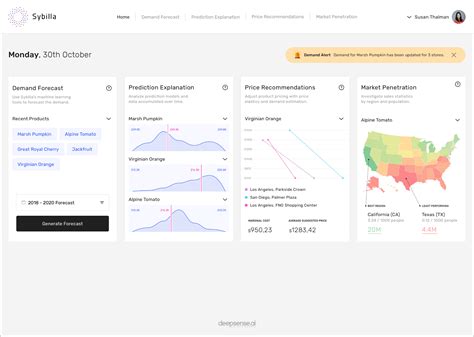As AI predicts the market response to regulatory changes in cryptography
The cryptocurrency market is known for its unpredictable character, and prices are very fluctuated according to various factors, including regulatory changes. While regulators are starting to notice the rapid growth and potential risks of the industry, artificial intelligence (AI) is increasingly used to predict how the markets will react to these developments. In this article, we will study how AI can be used to predict the market response to regulatory changes in cryptography.
Role of AI in market prediction
Artificial intelligence is a powerful tool that has gained ground in various industries, including finances and energy. By attracting automatic learning algorithms and large data sets, AI can quickly and precisely analyze an enormous amount of information, making it an ideal partner to predict the market response to normative changes.
In the context of the crypto, projected models can assess the potential impact of regulatory changes on the mood of the market, prices and commercial volumes. These models take into account different factors such as:
* Regulatory framework : Clarity and understanding of the rules may have a significant impact on market expectations.
* MULY OF THE MARKET : As investors feel certain regulatory changes, they can make decisions of their purchase and their sales.
* Market dynamics : The strength of large cryptocurrencies such as Bitcoin and Ethereum can affect the global market response to less.
Types AI of predictive models
In the cryptographic room, several of these operated models are used to predict the market response to regulatory changes. These include:
1
Automatic learning algorithms : These algorithms learn historical data to identify the models and correlations between regulatory changes and market results.
- Natural language treatment (NLP) : NLP allows models to analyze large amounts of text data, such as regulatory documents and press articles to understand the impact of changes in policy on the mood of the market.
3
Networks of graphic neurons : These advanced algorithms can model a complex relationship between different market players, including investors, traders and institutions.
Examples of the real world
Several exchanges of cryptocurrency, brokerage and financial institutions already use these models supplied to predict the impact of regulatory changes on the market. For example:
* Binance , one of the largest cryptocurrency scholarships, has used automatic learning algorithms to analyze historical data and predicts a market response to regulatory changes.
* Coinbase , a range of cryptocurrency based in the United States, has developed a model powered by the NLP analyzing press articles and political documents to predict the mood of the market.
advantages and restrictions
The use of AI for predictive modeling offers a number of advantages to predict regulatory changes:
* Improved precision

: AI algorithms can quickly and precisely process a huge amount of data, reducing the probability of errors.
* Analysis of real time : The models can give you an overview of the increase in dates on a market response to regulatory changes.
However, there are also limits to consider:
* Data quality : The reliability of forecasts largely depends on high quality relevant data.
* Market complexity : Cryptocurrency markets can be very complex and nuanced, which makes it questionable the exact development of estimated models.
Conclusion
AI-AI for the integration of predictable modeling in the world of cryptocurrency regulation has significant potential to improve market analysis and forecasts.